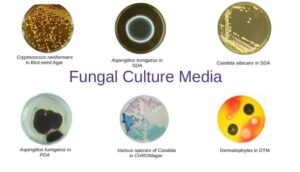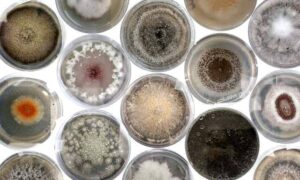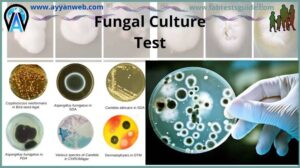Back to: MICROBIOLOGY 300 LEVEL
Welcome to class!
Hello, my amazing microbiologist-in-the-making! I’m truly glad to have you here once again, ready to learn and grow. Today, we’re going to talk about something that feels a bit like gardening—but instead of planting seeds in soil, we’re talking about Culture Media for Fungi. Just like plants need the right kind of soil to grow, fungi also need the right environment to grow in the lab. Let’s break it down together in a way that’s easy to understand and relevant to what you see around you every day.
Culture Media For Fungi
Fungi are everywhere—on bread, in the air, on the skin, and even in the soil. But to properly study or identify them, especially in a medical laboratory, we need to grow them in a controlled environment. That’s where culture media come in.

A culture medium is a special substance that provides nutrients and conditions suitable for fungal growth. Just like jollof rice needs rice, tomatoes, and pepper to be perfect, fungi need sugar, nitrogen, and the right pH to grow properly in a petri dish.
Types of Culture Media for Fungi
There are different types of culture media depending on what kind of fungus we want to grow or identify. Some media encourage all fungi to grow, while others are selective—allowing only certain types to grow by inhibiting others like bacteria.
1. Sabouraud Dextrose Agar (SDA):
This is the most common medium used for culturing fungi.
It contains dextrose (a type of sugar) and peptones (a source of nitrogen).
It has a slightly acidic pH (~5.6) which prevents bacterial growth while supporting fungal growth.
Often used to grow Candida, Aspergillus, and dermatophytes like those causing ringworm.
2. Potato Dextrose Agar (PDA):
Made from boiled potatoes and dextrose.

Encourages the growth of fungi by mimicking the nutrients found in nature.
Often used for growing moulds in food or environmental samples.
Good for studying the morphology (appearance) of fungal colonies.
3. Cornmeal Agar:
Especially useful for identifying Candida species, particularly Candida albicans.
Helps observe special structures like chlamydospores under the microscope.
4. Chromogenic Agar:
A modern type of media used to differentiate Candida species by colour.
Different species of Candida will produce colonies of different colours.
Makes identification quicker and easier in clinical settings.
5. Brain Heart Infusion Agar (BHI):
A rich medium used to grow both yeasts and dimorphic fungi.
Often used when trying to grow fastidious or slow-growing fungi like Histoplasma.
6. Czapek-Dox Agar:
Contains sodium nitrate as a nitrogen source.
Selective for growing fungi like Aspergillus.
7. Sabouraud Dextrose Agar with Antibiotics:
Sometimes antibiotics like chloramphenicol or gentamicin are added to SDA to suppress bacterial contamination.

Picture this: your aunt buys bread from the roadside and forgets to store it properly. A few days later, it develops green mould. That mould is growing because the bread offers the nutrients and moisture fungi need. In the lab, instead of using bread, we use media like SDA or PDA that give fungi the ideal conditions to grow—but in a clean, controlled environment where we can study them closely.
Summary
- Fungi need special nutrients and conditions to grow in the lab—this is provided by culture media.
- Sabouraud Dextrose Agar is the most widely used fungal medium.
- Other media like PDA, Cornmeal Agar, and Chromogenic Agar are used for specific identification.
- Antibiotics may be added to fungal media to stop bacteria from overgrowing.
- Choosing the right media helps microbiologists identify and treat fungal infections effectively.
Evaluation
- What is the most commonly used medium for fungal culture?
- Why is the pH of Sabouraud Dextrose Agar slightly acidic?
- Which medium helps in the identification of Candida albicans by showing chlamydospores?
- Name one advantage of using Chromogenic Agar.
- What kind of fungi can be grown on Czapek-Dox Agar?
Well done, superstar! You’ve just unlocked another powerful skill in your microbiology toolkit. Your understanding of fungal culture media is now stronger, and that takes you one step closer to becoming a top-notch microbiologist. Keep that fire of curiosity burning bright—Afrilearn is right here with you every step of the way. See you in the next class!
